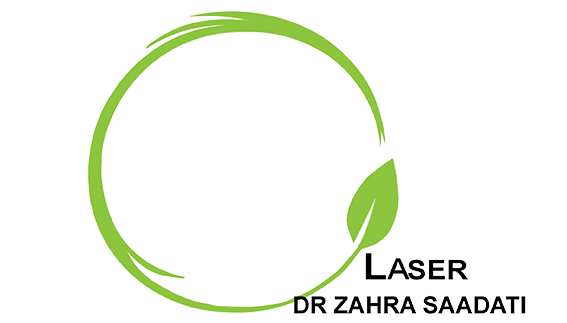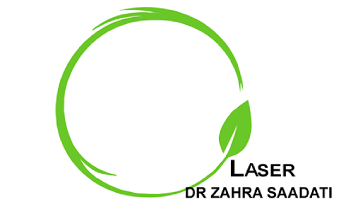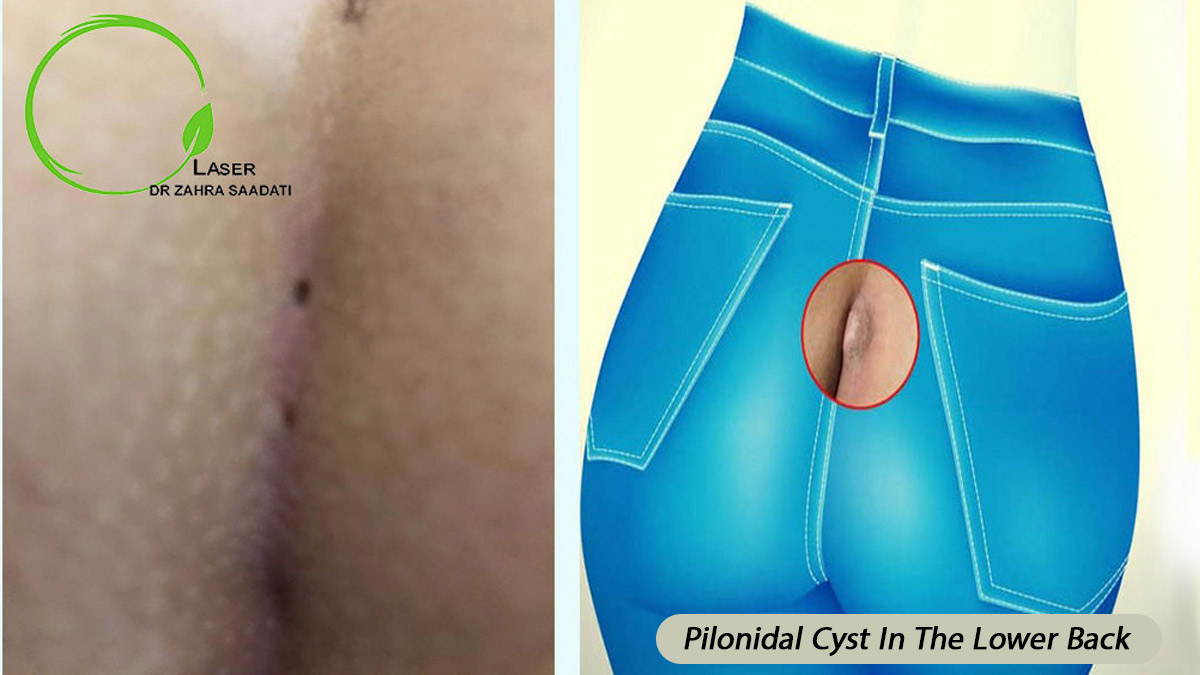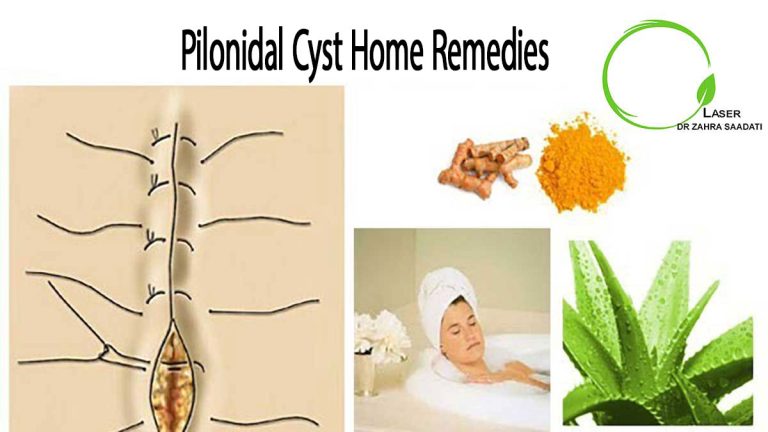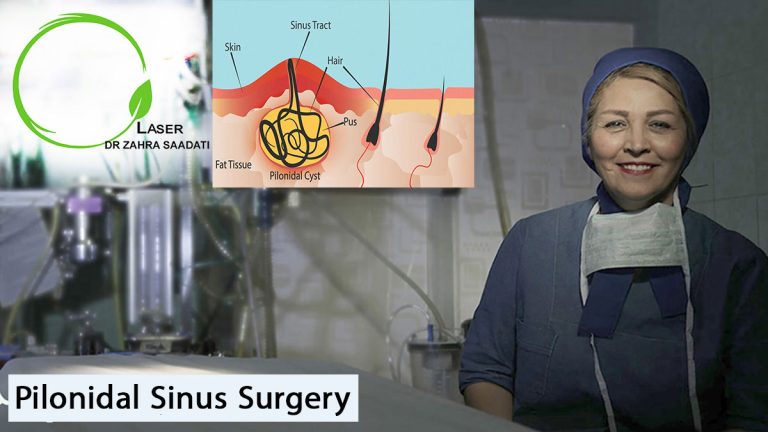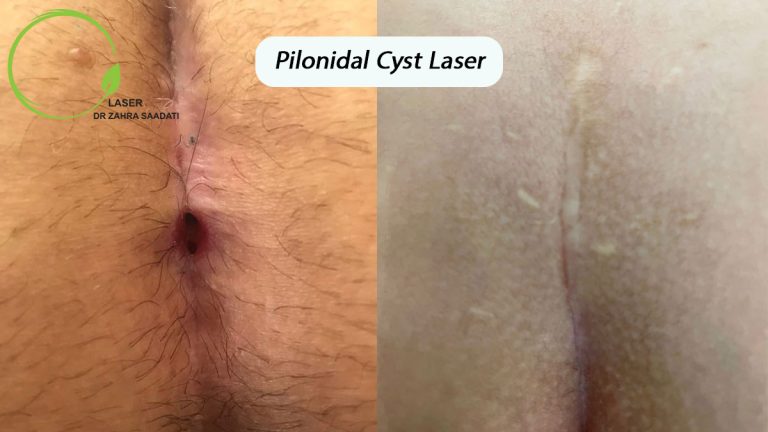As the name implies, a pilonidal cyst in the lower back occurs in the sacrum or below the spine around the coccyx or tailbone. That is why some patients refer to a pilonidal cyst in the lower back as a tailbone cyst. A pilonidal cyst in the lower back usually appears above the hip line in individuals who have thick hair in this area. However, those with fine hair but sensitive skin in this area may develop a pilonidal cyst in the lower back during puberty. In this disease, the reverse hair growth for unknown reasons creates a cyst-like lump under the skin. In advanced stages, this lump gets infected and turns into an abscess and then a fistule. This process is called pilonidal sinus fistulation.
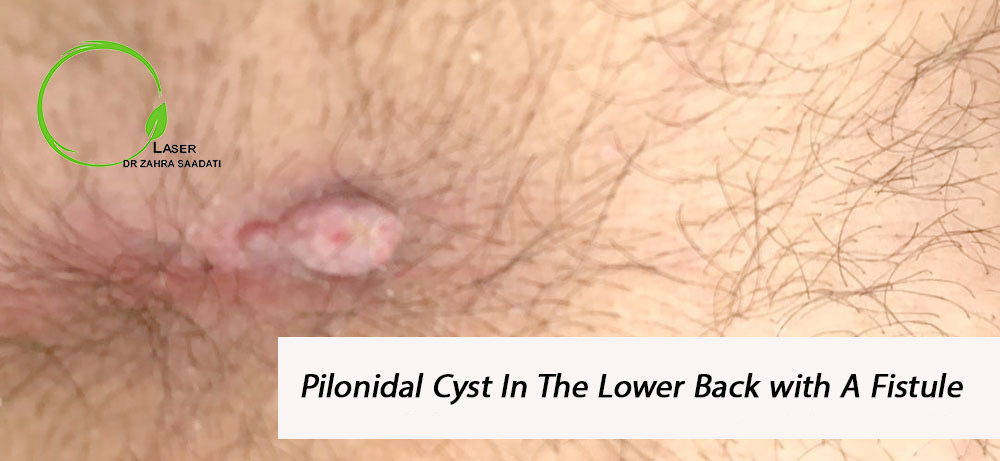
The best treatment of pilonidal sinus is to emit laser light into the area to dry the content in a non-invasive manner. More advanced cases of pilonidal sinus should be completely removed in a surgical procedure using a high-power laser. Pilonidal sinus laser does not cause the complications of conventional surgery and requires a very short recovery period. Since warmth and poor hygiene practices can cause a pilonidal sinus, this disease commonly occurs in the lower back. This area is under the pressure of pants and tight clothes; in addition, sitting for a long time can warm and impose greater pressure on this area.
What is a pilonidal cyst in the lower back?
Patients with a pilonidal cyst in the lower back usually notice their disease very late and, as a result, visit a general surgeon when the disease is in its advanced stages and the cyst has turned into an abscess or fistule. Considering the special anatomical position of the pilonidal cyst in the lower back, it is very important to choose the best method for treating this disease. Patients can avoid a long recovery period if they select an appropriate treatment or pilonidal sinus surgery.
Also known as pilonidal cyst, this disease occurs in the sacrococcyx area and affects 26 in every 100,000 people around the world. It is noteworthy that more than half of the patients with a pilonidal cyst in the lower back are men.
Symptoms of pilonidal cyst in the lower back
There is no specific symptom of a pilonidal cyst in the lower back. However, the general symptoms of this disease are as follows:
- Pain
- Redness and inflammation
- Fever and chills
- Foul-smelling discharges
Note that a pilonidal cyst in the lower back is asymptomatic until it gets infected. However, if you have any of the above-mentioned symptoms, visit a general surgeon and laser surgery specialist to examine the wound.
Treatment of pilonidal cyst in the lower back:
Treatments for a pilonidal cyst in the lower back are based on the drainage of cysts. Since this is not possible through medication, the specialist uses an appropriate method to destroy the cyst wall and remove the affected tissue. It is recommended to visit an experienced and proficient general surgeon for the treatment of a pilonidal cyst in the lower back. There are two common surgical methods for treating a pilonidal cyst in the lower back:
- Closed surgery in which the wound is sutured.
- Open surgery in which the wound is left open and requires the patient to change the wound dressing every day for a few months.
The general surgeon may perform surgery using blades, cauters, or lasers. As you know, the laser is one of the most advanced technologies employed in this field. A good and experienced general surgeon may pursue two goals while treating a pilonidal cyst in the lower back: minimizing the risk of recurrence and leaving no scar or wound at the surgical site.

Causes of pilonidal cyst in the lower back
Physicians and specialists argue that a pilonidal cyst in the lower back results from the reverse growth of hair gotten stuck in this area because they observe hair and follicles at the cyst wall when they are performing a surgical procedure to remove the cyst. Traumas can also cause hair to get stuck in the lower back. That is why physicians recommend people avoid sitting for a long time in order to reduce the pressure on the anal area and prevent a pilonidal cyst in the lower back. Genetic and environmental factors may be also involved in the development of a pilonidal cyst in the lower back. Such individuals should eliminate excess or unwanted hair from this area.
Diagnosis of pilonidal cyst in the lower back
Patients may suspect a pilonidal cyst in the lower back when they notice a skin bulge in the lower back. Some patients may fail to notice this sign until they observe one or more dark holes in the sacrum. Finally, patients should visit a general surgeon to definitively diagnose their pilonidal cyst in the lower back. After taking the patient’s history and examining the area, the general surgeon informs the patient of his/her diagnosis or prescribes the necessary tests in case of any suspicious issue. When a patient is diagnosed with an advanced pilonidal cyst in the lower back accompanied by deep fistules, the general surgeon prescribes MRI or medical imaging before surgery.

Prevention of pilonidal cyst in the lower back
The first and best way to prevent a pilonidal cyst in the lower back or its recurrence is to remove excess or unwanted hair in this area. It is recommended to permanently remove unwanted hair using Alexandrite lasers. Companies offer this type of laser under different brands. There are other methods for removing unwanted hair from this area. If you have an open wound after surgery, note that shaved hair should not get into the wound because it can cause infections.
Overweight or obese individuals are recommended to start losing weight and following a healthy diet rich in vitamins. It is also better to avoid wearing tight clothes or those made of plastic materials and protect the lower back skin against pressure and friction.
Frequently asked questions (FAQs) about a pilonidal cyst in the lower back
1-Does a pilonidal cyst in the lower back heal on its own?
A pilonidal cyst in the lower back does not heal on its own. The only way to prevent the progression of a pilonidal sinus and treat it is to destroy the cyst wall and drain its content.
2-What is the fastest way to treat a pilonidal cyst in the lower back?
The only way to get rid of a pilonidal cyst in the lower back is to destroy the cyst wall in a surgical procedure. There are a few home remedies proposed for treating a pilonidal cyst in the lower back, and most of them are useful for postoperative care. For example, apply a piece of cotton dipped in hot water to the area several times a week or use a warm compress to reduce pain and inflammation.
3-Is it possible to treat a pilonidal cyst in the lower back at home?
Note that home remedies for pilonidal sinus or cyst are only used to relieve pain. In fact, home remedies cannot definitively treat a pilonidal cyst in the lower back. Home remedies can only help you to shorten the recovery period.
4-Is a pilonidal cyst in the lower back serious?
A pilonidal cyst in the lower back is not inherently serious, but it can cause infections if it remains untreated. For example, an untreated pilonidal cyst in the lower back may cause multiple abscesses and then fistules. The entry of infections caused by these abscesses or fistules into the blood circulation can lead to serious complications.
5-Is it possible that a pilonidal cyst in the lower back causes back pain or leg pain?
A pilonidal cyst in the lower back does not lead to back pain or leg pain, unless it is infected and spread to other parts of the body. In most cases, a slipped disc is responsible for back pain or leg pain.
